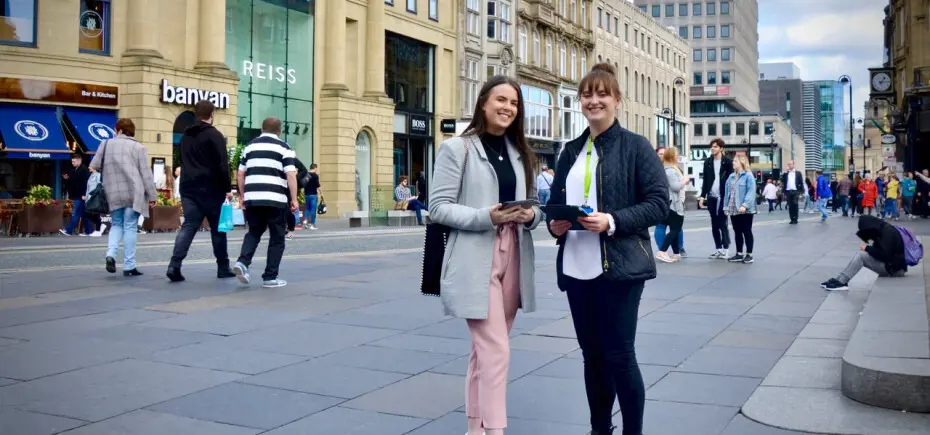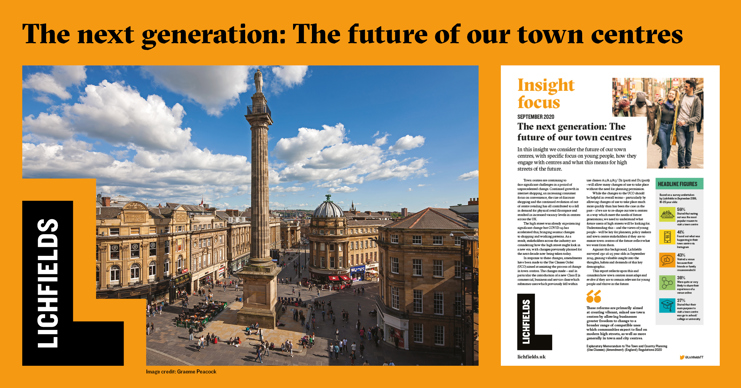As a town planning consultant with a passionate interest in successful places, I will never accept that the high street is dead. And if you take a look at our blog series – the High Street isn’t dead, long live the High Street - I am clearly not alone as many of my colleagues think the same.
From the title of this blog you may be forgiven for thinking that I am about to set out my thoughts on the rise of internet shopping – but, no, that is a subject which has been well covered elsewhere. In fact, what I would like to discuss in this blog are the opportunities for the high street which are emerging through increasing use of technology, particularly by younger generations.
Young people’s relationship with the internet and social media is agile. In 2019, the ONS found that 100% of 16 to 24 year olds access the internet on a mobile device and, unsurprisingly, this age group engage very actively with social media (98%) and are highly adept at finding out about information on goods and services online (84%). It is clear that young people are actively using the internet when shopping.
Last year, Lichfields undertook a survey to try and develop a better understanding of young people’s habits and how they use town centres. The research – which was based upon a survey of around 230 young people aged 16-25 - uncovered a number of trends, which can be read in more detail in our latest insight focus –
The next generation: the future of our town centres. One of these trends was young people’s interactions with technology and the high street.
The results of our survey indicated that, through their use of technology, 39 per cent of respondents were ‘very’ or ‘quite likely’ to share their experience or interact with a venue in the town centre on social media once they had visited. This suggests that a high proportion of young people take to social media to talk about their high street experiences, and highlights the importance of social media channels as platforms for town centre operators and businesses to promote themselves online to their target audience.
Respondents also said that they found out about things happening in their town centre using Facebook (60 per cent) and Instagram (41 per cent). This extended not only to new stores or venues, but also other ‘pop up’ events and markets taking place.
As we live with COVID-19 there is now an increased focus on social media as town centre businesses and other stakeholders look to re-connect with potential customers and showcase goods and services. While some businesses will seek to promote their offer on a national scale, including through online advertising, there is also scope for businesses within town centres to take a co-ordinated approach through a central body (such as a business improvement district). This ability to communicate directly with customers in a live setting is likely to be increasingly valuable as the high street looks to bounce back and build trust with its returning customers.
How important will retailing be in town centres of the future?
We know our high streets have experienced significant change as a result of shifts in shopping patterns and that COVID-19 has acted as a catalyst, resulting in seismic changes to shopping and working patterns over a very short period of time. As a result, many town centre stakeholders are currently looking at how the high street might look in a new era, with changes previously planned for the next decade now being taken today.
In our survey, 59% of 16-25 year olds said that one of the main purposes behind their visit to a town centre was to eat out, compared to 46% who referred to ‘browsing the shops’ and ‘shopping for non-food goods’. Whilst eating out experiences may have surpassed shopping in this survey, shopping still plays a role in why young people visit a town centre.
Young people are omni-channel shoppers and this has a significant influence on how they use centres. Unlike previous generations who relied upon shopping in person, younger people now use multiple channels to meet their shopping needs, blending different channels to maximise personal convenience. This often involves a visit to a town centre (e.g. to browse or to collect goods) even if purchases are actually made online.
Indeed, 60% of the respondents to our survey indicated that they would still use town centres in one way or another when shopping for non-food goods. This would suggest that young people see online shopping as complementary rather than as a substitute for visiting the high street.
So, what does this mean for the future of our town centres?
Rather than focussing on the past, we need a better understanding of the needs of consumers of the future – and, in particular, we need to continue to take account of young people’s habits and preferences. Their online interactions with high street businesses and other organisations provide an insight into how we can expect to see the high street of the future. Young people want something different from previous generations, something that is more of an experience that offers a range of uses and attractions. Retail is a key part of that, but it’s not the dominant element.
Understanding how technology works and how young people want to interact with town centres both online and in person is unquestionably important and will be key to success in the future. While it is easy (and perhaps understandable) to focus in on the threat presented by online shopping, the reality is that digital channels, and social media in particular, offer huge potential and the successful town centres of the future will be those with an embedded digital strategy which drives both interest and footfall.




